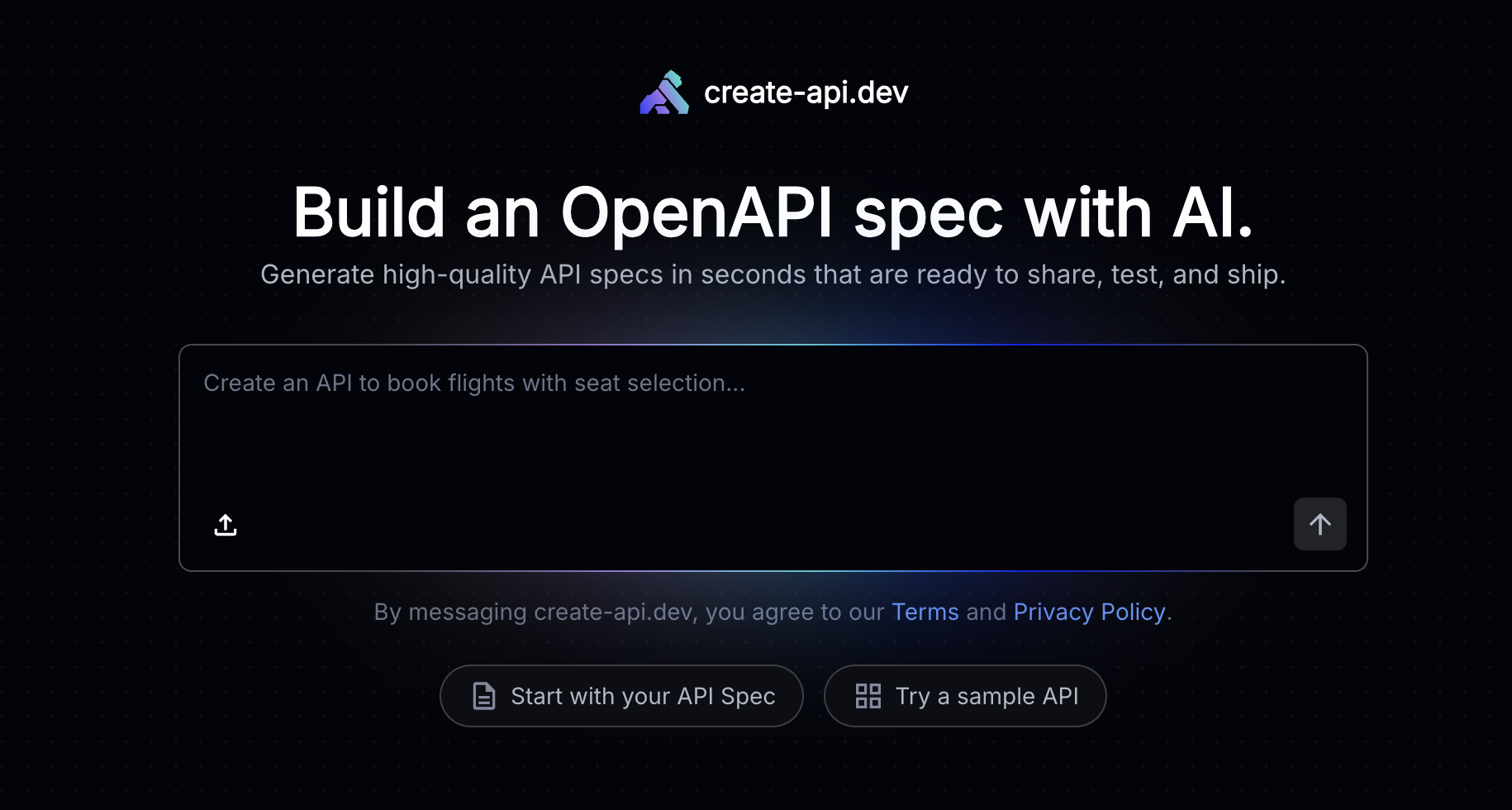Now it’s live at create-api.dev. No login. No setup. Just describe an API and get a structured OpenAPI spec you can refine, share, and eventually ship.
Why we built it
Many popular OpenAPI design tools are either dated or too heavyweight for early-stage API design. We wanted something faster. Minimal UI. Simple collaboration. Type a prompt or upload a design or spec, and create-api.dev will generate an OpenAPI spec. Share the link. That’s it.
Rendering your designed spec in create-api.dev was also a chance to show off our newly open sourced spec renderer, the same one used in the Konnect Dev Portal (which you can try for free). There are plenty of spec rendering tools out there, but our team put serious effort into building something lightweight, fast, and customizable. Check out the project.
As you may imagine, the system prompt we use includes some basic instructions for generating an OpenAPI spec — but we also have incorporated design guidelines we use inside Kong R&D (see it here). As far as models, we’re currently using Google’s Gemini because the large context window works well for OpenAPI specs.
How well does it work?
For small to mid-size REST APIs, create-api.dev has produced solid results in our internal testing. We're also tracking spec quality with an eval system (we're starting with DeepEval) as we react to feedback and continue to update the system prompt
We welcome your feedback to help improve! After you generate a spec, you can send feedback directly in the app. We use that input as part of our ongoing improvement process.
What you can do with it
Here are three common starting points we've seen:
- Create an API from scratch Just describe the idea. You can keep it simple or include detailed context like endpoints, data types, or workflows.
- Upload an existing spec: If you already have a spec, you can upload it and ask for changes. Tweak endpoints, rename fields, or extend functionality.
- Start from a design doc: Paste in a product or engineering brief. The system prompt is designed to extract structure from natural language input and generate a matching OpenAPI spec.
Once you design a spec, you can:
- Share it instantly. No login required
- Import it into Konnect to apply Gateway policies like rate limiting or key auth
- Publish it to a Konnect Dev Portal in a few clicks and share it with external developers
We don’t help you build the backend yet, but this shows how spec-first design fits into a modern API workflow and how Kong tools can support that process.
We’re excited to see what you build.
👉 Try it at create-api.dev
Bonus: How we’re using AI Gateway
We’ll share more details in a future post, but create-api.dev isn’t just a standalone tool. It’s also a working demo of how teams of any size can ship better AI-powered apps using Kong’s production-grade infra products.
All model requests go through Kong’s AI Gateway, the same system many of our customers use for their own AI applications. It gave us a faster way to add basic protections, routing, and visibility into how prompts are handled across different models and environments.
We're using Gemini in this setup, but AI Gateway makes it easy to route and A/B test across other model providers as well.
One example of what AI Gateway makes possible: we’re using the Semantic Prompt Guard plugin to block prompt injection attempts before they reach the model. Even this simple setup (a short deny list) was easy to implement and effective at blocking common attacks. It also helps reduce unnecessary token usage.









